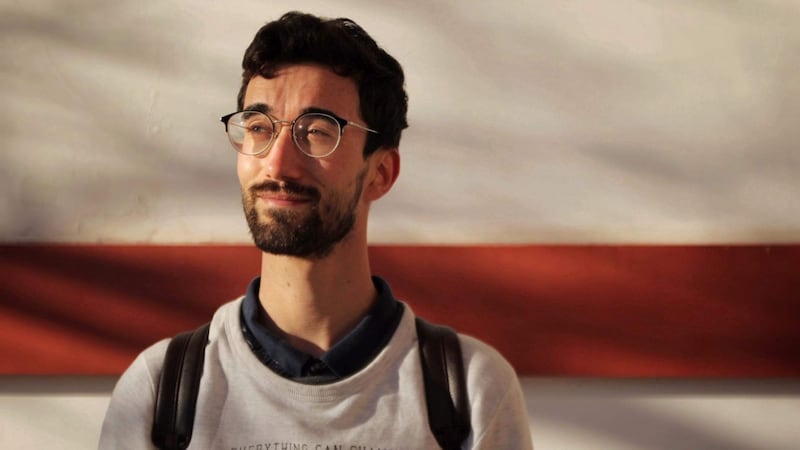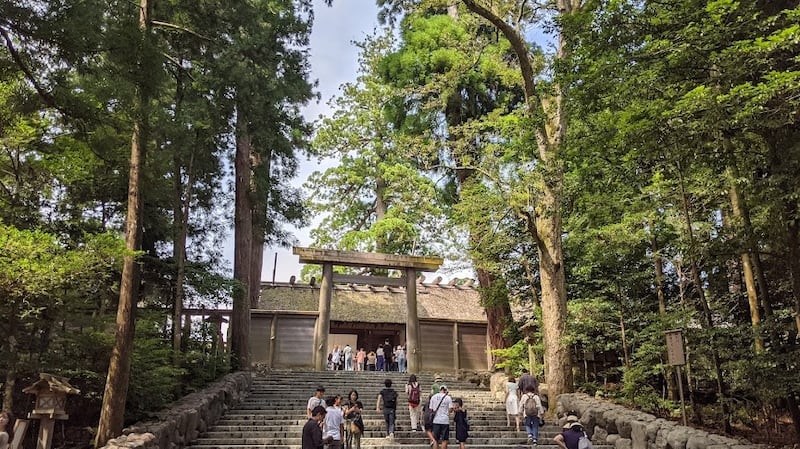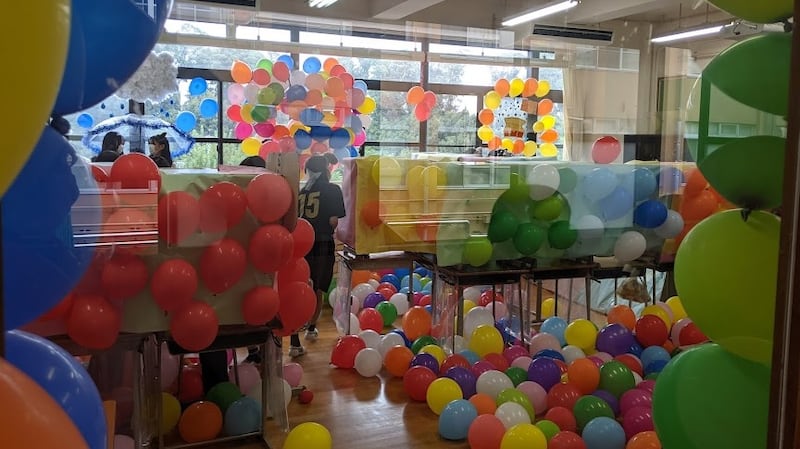Daniel Mulcahy is from Galway and a graduate of NUIG's BA in English and creative writing. Since 2019, he has been living in Kyoto and working through the Japan Exchange and Teaching (JET) Programme, which promotes international exchange with other nations. He is a high school English teacher in Kyoto city and says life there makes him feel constantly grateful and constantly bemused
All through the summer holidays, it rained - a second monsoon. The sky was swollen and we hung our washing inside as I used to in Galway. Unusual weather. Previous years saw extended periods of glorious sun when we’d pack canvas bags with sushi and beer and take the train across the mountains to Lake Biwa. There we’d mingle with the Brazilians of Shiga, who lined the shores with barbecues and the sound of laughter.

This year was a wash out. My girlfriend and I resorted to breaking with the official stay-home request only once, sneaking out on a single Saturday when the rains broke briefly. We found the beaches packed. Can’t let good sun go to waste.
We also chanced a weekend at the tail end of July to visit Ise, the living heart of Shinto, Japan's endemic animism.Not quite a religion, deep woodlands mark the boundary of Naigu and Gegu, the shrines themselves understated, almost an afterthought. The trees that hem and sometimes interrupt the pathways are the main event, living gods, their tops lost to sight. People swarm their bases, making pilgrimage as they have done for centuries. The little shopping district at the Naigu's entrance was thronged all day.
The Japanese constitution guarantees certain personal freedoms that disallow a nationwide lockdown. I've read that the government worries such a top-down imposition of bureaucratic will would foster resentment
The holidays closed out with the Obon festival, a time to pay respects to those who have passed on, a parallel to Samhain or Mexico’s the Day of the Dead. Obon culminates in Daimonji - the synchronised lighting of several immense bonfires arrayed on hills throughout Kyoto, each of them spelling out a different Chinese character. This year, as with the year before, the celebrations were curtailed, the crowds gathering at Demachiyanagi urged to move on by armies of volunteers with glowing wands. Huddled in the shadows of the delta, we took in the eponymous Dai, a character that signifies greatness.

We watched five points on the hill, hardly visible against the dark above the lights of the buildings, flare up for half an hour or so then dwindle into obscurity. Crowds of college students surrounded us in thick groups, taking TikTok videos, jamming with bongos, lighting fireworks.
The Japanese constitution guarantees certain personal freedoms that disallow a nationwide lockdown. I’ve read that the government worries such a top-down imposition of bureaucratic will would foster resentment. Instead, they have relied on requests, or orders (the Japanese term is ambiguous), for people to limit their movements and for certain businesses to close early or refrain from selling alcohol. Small change really. The main tactic has been a reliance on the Confucian ideals of harmony and group responsibility that underpin an orderly society - the hope that shame or embarrassment (again, a single word conveys both meanings) will keep people in check.
Somehow, it doesn’t feel like it’s been working. A local restaurant owner sold us beer with a wink and a non-alcoholic prop bottle. I returned to work to find 10 students had been isolated to contain a Covid cluster.
Despite the state of emergency and a record peak in Covid cases, both high schools I teach at were planning to hold their annual culture festival, albeit in a diminished capacity. In a regular year, this is a calendar staple where the kids can put on performances, play music and organise games and exhibitions. Given the circumstances, no outside visitors would be allowed. Seating was to be socially distanced, disinfectant spray made liberally available. Still, for two full days, the auditoriums and corridors would be packed out with exuberant teenagers determined to make the most of their school lives.

I asked a colleague if he was excited about the upcoming festivities. He ducked his head and, with a surprisingly vehement hiss aimed under the hearing of anyone around us, asked how the local authorities could allow such stupidity to happen.
In the school cafe, students are now supposed to face the front and eat in silence. The government calls this mokushoku, a term that shares a character with the serious practice of seated meditation performed before martial arts training. Masks off and smiling, the students huddle close, often chatting happily behind and around the lines of plastic shields we erected when all of this first started.
We play videos to keep them occupied. The Olympics passed like a bad joke, so then it was live feeds of the Paralympic Games instead. There was something beyond impressive seeing the athletes perform despite everything. I watch in awe as an Egyptian man without arms plays a blinding game of ping pong. He kicks the ball off the floor and with a flick of his head sends it flying with topspin down the table. The game finished, he dropped to his knees to pray. I felt a weight crowd the air.
Kyoto sits in a bowl of mountains, gathering the clouds, swilling the summer humidity like a teacup. Locals say there are spots in the mountains where power converges: ley lines or alien landing sites, gateways to the mystical. The austere stronghold of Mount Hiei, once considered the centre of Japanese Buddhism. Mount Kurama, the birthplace of the energetic healing practice known as reiki, which my father practices sincerely.
The iconic Kiyomizu-dera, temple of the pure waters, is within sight of our apartment. From our living room window, the ghostly shape of its pagoda reaches us nightly.
In the wake of recent renovations, boards of the centuries-old flooring were repurposed to construct a clavichord, a musical instrument more quiet and ethereal than the piano. From the walls of the darkened space that house the instrument, the exhibition notes proudly proclaim Kiyomizu as a focal point for the hopes and wishes of untold thousands. In the clean air among the trees of the mountain complex, strands of prayers intermingle like music, bringing healing and prosperity for the world.
It is a beautiful story.
If you live overseas and would like to share your experience with Irish Times Abroad, email abroad@irishtimes.com with a little information about you and what you do


















